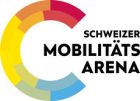First Ranking of Automated Driving Systems
CR finds that these features make driving easier but introduce new safety risks
In Consumer Reports’ first-ever ranking of partially automated driving systems, Cadillac’s Super Cruise (shown above) was top-rated because our testing shows it does the best job of balancing high-tech capabilities with ensuring that the car is operated safely and that the driver is paying attention.
These systems offer driving convenience features that will be available on more vehicles in future model years. When engaged, they use cameras, radar, and other sensors—and sometimes even mapping data—to try to keep a car centered in a lane and control speed so that the car remains a set distance in traffic from vehicles in front.
CR experts stress that the systems are not intended to be self-driving features. However, in the right circumstances, such as on long highway drives or in stop-and-go traffic, they can help relieve driver fatigue and stress.
The risks come if automakers allow the systems to operate in situations where they can’t do so safely and if the systems make it easy for drivers to feel like they don’t need to pay attention.
In CR’s rankings, Tesla’s Autopilot came in second, followed by Nissan/Infiniti’s ProPilot Assist and then Volvo’s Pilot Assist system.
Autopilot scored highly for its capabilities and ease of use, while Nissan’s system was better at keeping drivers engaged. Volvo scored comparatively lower.
09. Oktober 2018
AUTOMAT VOR ORT: KONFERENZ AUTOMATICAR 2020
Am 16. September findet der Fachkongress AUTOMATICAR zum 2. Mal änlässlich der ...
»weiterlesenAUTOMAT vor Ort: Konferenz AUTOMATICAR
Am 12. April fand das erste Mal die von der Mobilitätsakademie des TCS organisierte ...
»weiterlesenAutomat vor Ort: EPTA Conference 2017
EPTA Conference 2017 „Shaping the Future of Mobility“ Luzern, Verkehrshaus, Mittwoch, 8. ...
»weiterlesenAuto-mat vor Ort: Automatische Shuttlebusse tpf
Am 22. September war www.auto-mat.ch live vor Ort, als die ersten beiden automatischen ...
»weiterlesen


